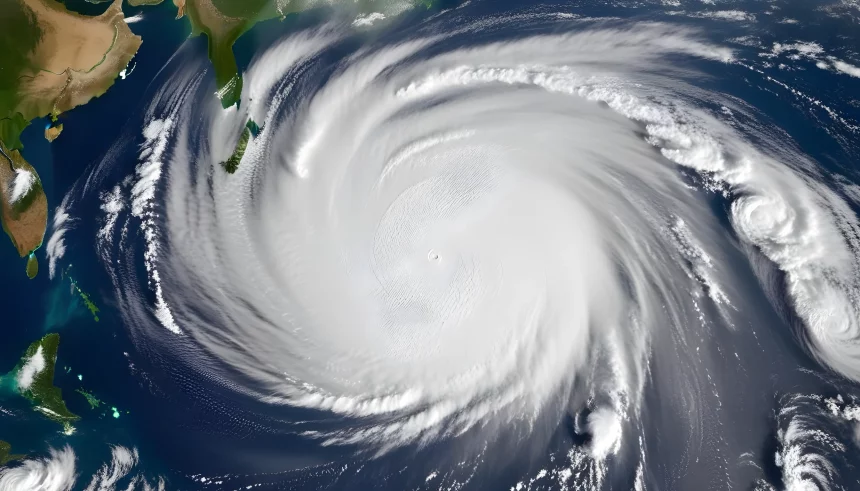Among Earth’s most destructive natural occurrences are cyclones. The Bay of Bengal emerges as a hotspot where these cyclones form, wreaking havoc on the lives and properties of nations such as India, Bangladesh, and Myanmar. We will delve into the unique factors in today’s blog that make the Bay of Bengal prone to cyclones, comparing it with the Arabian Sea.
Why Does the Bay of Bengal Keep Experiencing Cyclones? Unveiling its Mysteries

The Bay of Bengal’s Shallow Embayment
The Bay of Bengal’s shallow nature distinguishes it from the deeper Arabian Sea. This shallow embayment fosters an environment conducive to cyclone development. The Bay of Bengal, given its expansive size, warms up swiftly, triggering more evaporation. Furthermore, it generates high-pressure areas, perfect conditions for cyclones to flourish. Consequently, this area gains the unfortunate distinction of being among the world’s most active cyclone hotspots.
In the Bay of Bengal, cyclones often gather more strength from various factors: warm ocean waters, gentle winds, and the moisture in the air. These elements team up to give cyclones in this region a powerful boost. This lethal trio sets the stage for the frequent and intense cyclones that batter the eastern coastal line of India.
- Advertisement -
The Geometrical Impact of the Bay of Bengal
The Bay of Bengal’s geometry plays a crucial role in cyclonic intensity. Its long curved coastline acts as a funnel, magnifying wind speeds as they converge into the bay. This geographical configuration intensifies storms, significantly elevating their destructive potential. As a result, West Bengal, situated along the Bay of Bengal, has earned a notorious reputation as one of the most active areas for tropical cyclone formation globally.
Despite its vast area, the Bay of Bengal’s liability for storm dissipation is another factor contributing to its high cyclone frequency. The elongated shape allows cyclones to disperse more slowly, maintaining their strength and ferocity over extended periods.
The Role of the Arabian Sea’s Contrasting Conditions
In contrast to the Bay of Bengal, the Arabian Sea witnesses lower cyclonic movements, totally because of its several distinguishing features. The sea’s narrow width and greater depth create an environment less favorable for cyclone development. Moreover, the Arabian Sea, surrounded by Oman, Iran, Pakistan, India, and the Arabian Peninsula, holds a unique feature—being partially enclosed. This containment contributes to higher salinity levels. These factors, coupled with relatively cooler temperatures in contrast to the Bay of Bengal, work together as a barrier against cyclone formation.
The Arabian Sea’s geographical characteristics, including its narrower expanse and deeper waters, contribute to a more stable environment. These conditions render the Arabian Sea considerably less susceptible to cyclones. It appears that nature has set up a unique defense mechanism, creating a noticeable distinction between the two regions.
Conclusion
The Bay of Bengal stands out as a cyclone epicenter due to a range of factors, such as its shallow embayment, unique geometry, and regional climatic conditions. Knowing these factors is essential for lessening the damage caused by cyclones and improving readiness in the countries they affect. As we wrestle with nature’s powerful forces, it’s clear that the region’s cyclone tendencies arise from geography, weather, and environment. By struggling with these intricacies, we can take steps toward building resilience and minimizing the devastating consequences of cyclones in this vulnerable region.


